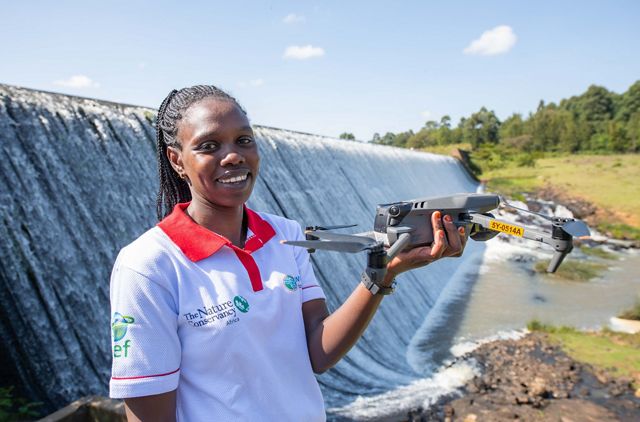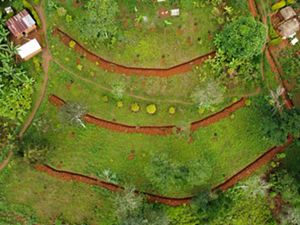Supporting monitoring around the world
While drone photography has proven the most effective monitoring strategy at the Eldoret-Iten Water Fund, monitoring must be localized to the specific challenges, goals, communities, and geographical circumstances of different projects.
At the Greater Cape Town Water Fund in South Africa, for example, The Nature Conservancy worked with partners to create an online Decision Support System that serves as a centralized management tool, tracking the field operations of the program’s numerous partners and the conservation progress being made. In Ecuador, one of the monitoring strategies used by the Quito water fund – known as Fondo Para la Protección del Agua (FONAG) – was to hire community park rangers who regularly surveil and monitor the program’s 48,000 hectares. And in Colombia, the Manizales Water Fund installed two automated hydro-meteorological stations that track in real-time such things as rainfall, streamflow, and sediment concentrations, providing critical insight into watershed behavior particularly in response to extreme weather events driven by climate change.
“These examples demonstrate the value of tailored monitoring systems,” said Carlos Andrés Rogéliz Prada, Technical Director of the Nature for Water Facility at The Nature Conservancy. “Monitoring systems must be adapted to address specific regional challenges, leveraging partnerships and innovative technologies to improve watershed management outcomes.”
The Nature Conservancy has developed a variety of tools that can help communities and project developers identify which monitoring strategies will work best for them.
The Resilient Watersheds Toolbox includes case studies, online trainings, templates, a library of resources, and step-by-step guidance on how to design, launch, and monitor water funds and other watershed investment programs using nature-based solutions.
The Conservancy also created a Primer for Monitoring Water Funds that outlines the strengths and weaknesses of various monitoring strategies and how to determine which is best for a project.
And for those who need more support, Nature for Water, a partnership managed by The Nature Conservancy and Pegasys, provides hands-on technical support needed to get new watershed investment programs off the ground and help ensure they thrive long into the future.























